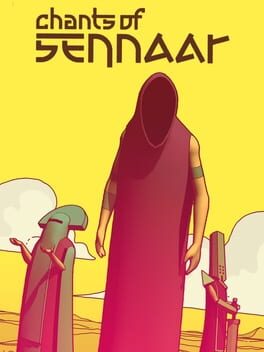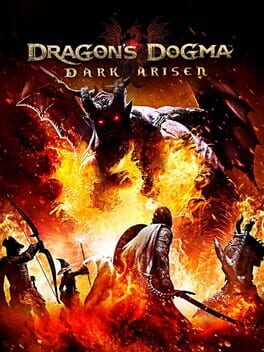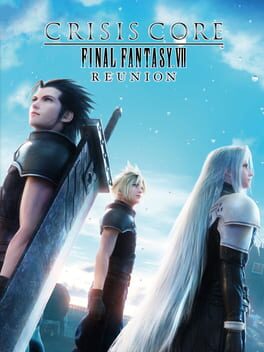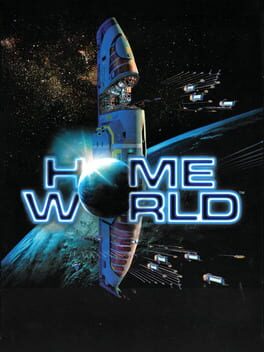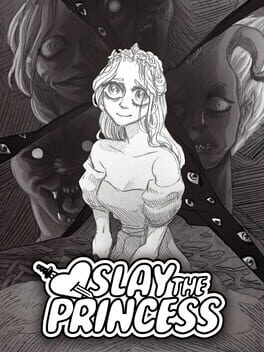AtelierAlex
Bio
Nothing here!
Badges

2 Years of Service
Being part of the Backloggd community for 2 years

Best Friends
Become mutual friends with at least 3 others

Noticed
Gained 3+ followers

N00b
Played 100+ games
162
Total Games Played
003
Played in 2024
031
Games Backloggd
Recently Played See More
Recently Reviewed See More
tl:dr a very satisfying language puzzle game that, in the desire to expand the game's length, begins to focus less on what makes the idea so good and more on what pads the runtime.
This was a less positive review than I was expecting to write halfway through. I really enjoyed the linguistic mechanics and the varying languages. They had visual and sentence structure quirks that made learning them feel like a new puzzle each time. Some of these being a good challenge too. The visuals and the color palette were also a delight. Unlike some other reviews, I, for the most part, enjoyed the puzzles, and the early usage of stealth was good. Backtracking could be a little tedious, but the gameplay cycle was only about an hour to 90 minutes for each floor, so it didn't bother me too much.
My qualms about the game fall into two categories. Some spoilers coming up.
The first one is that the world would have been much more interesting if it felt more reactive to the player. The terminal communication that is encouraged to be left towards the end was a great set of puzzles that had me wondering why this wasn't seeded more into the level design. After all, the heart of the game is visual and verbal translation, so why shouldn't it be emphasized more? I also think that a similar system could have been used when solving language puzzles. People asking for responses you have to try to cobble together instead of everything being one-sided would have made the world feel more alive rather than you being a ghost that no one pays much mind to besides a couple of words. As the levels progressed, the game tried to diversify gameplay. Yet, the language mechanics stayed largely static when they should have been the primary focus (not counting that largely superfluous minigame on the 5th floor that wanted you to get through that floor as fast as possible). Language is ultimately a two-way agreement, and yet chants of sennaar was so one-sided. I may have forgiven this if the puzzles were more than just gameplay. Outside of the immediate puzzles, you're not using what you learned to engage with the world. This is a lean game for better or worse, usually for better, but I don't think it would have hurt to have some optional dialogue/language puzzles to learn more about the world of each floor. I will say the game does have good visual storytelling that carries some of this slack.
My second issue is that the further the game continues, the more it feels like a second game was smashed on top of Chants of Sennaar and shoddily bolted on. The game's overt usage of the Tower of Babel and its own caste system gives the vibe of a mythical era story, which it faithfully follows up on in the first 3 floors and the 4th one flexibly. Then you get to the final floor, and we're now in the matrix... fighting an evil supercomputer that wants to prevent people from talking to each other because it was programmed to be racist? It's described that each civilization is doomed to collapse without help when all you see is one isolated issue per floor that, in a couple regards, feels tacked on. The story elements are so backloaded and under incorporated that I can't help but wonder if there was a big pivot in development late on.
Humans have, for thousands of years and still today, struggle to come to terms with differences in language, culture, hierarchy, and desires. There's enough conflict right there to make a compelling storyline without turning the world into a cyberpunk dystopia.
This was a less positive review than I was expecting to write halfway through. I really enjoyed the linguistic mechanics and the varying languages. They had visual and sentence structure quirks that made learning them feel like a new puzzle each time. Some of these being a good challenge too. The visuals and the color palette were also a delight. Unlike some other reviews, I, for the most part, enjoyed the puzzles, and the early usage of stealth was good. Backtracking could be a little tedious, but the gameplay cycle was only about an hour to 90 minutes for each floor, so it didn't bother me too much.
My qualms about the game fall into two categories. Some spoilers coming up.
The first one is that the world would have been much more interesting if it felt more reactive to the player. The terminal communication that is encouraged to be left towards the end was a great set of puzzles that had me wondering why this wasn't seeded more into the level design. After all, the heart of the game is visual and verbal translation, so why shouldn't it be emphasized more? I also think that a similar system could have been used when solving language puzzles. People asking for responses you have to try to cobble together instead of everything being one-sided would have made the world feel more alive rather than you being a ghost that no one pays much mind to besides a couple of words. As the levels progressed, the game tried to diversify gameplay. Yet, the language mechanics stayed largely static when they should have been the primary focus (not counting that largely superfluous minigame on the 5th floor that wanted you to get through that floor as fast as possible). Language is ultimately a two-way agreement, and yet chants of sennaar was so one-sided. I may have forgiven this if the puzzles were more than just gameplay. Outside of the immediate puzzles, you're not using what you learned to engage with the world. This is a lean game for better or worse, usually for better, but I don't think it would have hurt to have some optional dialogue/language puzzles to learn more about the world of each floor. I will say the game does have good visual storytelling that carries some of this slack.
My second issue is that the further the game continues, the more it feels like a second game was smashed on top of Chants of Sennaar and shoddily bolted on. The game's overt usage of the Tower of Babel and its own caste system gives the vibe of a mythical era story, which it faithfully follows up on in the first 3 floors and the 4th one flexibly. Then you get to the final floor, and we're now in the matrix... fighting an evil supercomputer that wants to prevent people from talking to each other because it was programmed to be racist? It's described that each civilization is doomed to collapse without help when all you see is one isolated issue per floor that, in a couple regards, feels tacked on. The story elements are so backloaded and under incorporated that I can't help but wonder if there was a big pivot in development late on.
Humans have, for thousands of years and still today, struggle to come to terms with differences in language, culture, hierarchy, and desires. There's enough conflict right there to make a compelling storyline without turning the world into a cyberpunk dystopia.
There are a lot of neat ideas and moments of cool emergent gameplay, but it never coalesces for me. The individual bits are too separated by poor writing, segmented story fragments, uninspired quest design, and frustrating information held back from the player. While the last bit was an intentional choice I can respect, it did not make the experience more satisfying overall. In large part, this feels like a game designed to be played once by yourself and the second with a guide, and the world simply isn't interesting enough to grab you for a repeat to collect the quests you missed.
Combat was a blast. It never gets old climbing a big monster. And I really like what was attempted with the story thematically if it could have just been woven in a little more than the first 10 minutes and the last 10 minutes. If anything it gives me a lot of hope that 2 can connect a lot of these dots better with some refinement and a second attempt at this formula.
Combat was a blast. It never gets old climbing a big monster. And I really like what was attempted with the story thematically if it could have just been woven in a little more than the first 10 minutes and the last 10 minutes. If anything it gives me a lot of hope that 2 can connect a lot of these dots better with some refinement and a second attempt at this formula.
This review contains spoilers
This is a story about humanity and its fear of death, its fascination with death, its desire to triumph over death. Slay the Princess is about the fear of one day disappearing from this world. Yet, there will always be something new to take the spot of something old when it dies. Something new, something possibly better, something possibly worse. If we never give that opportunity a chance to live then we're stuck in a neverending stagnation. To fear death is to fear outcome.
The narrator is the fear that lives inside us all. Maybe he's right because we fear what could happen. Should all the people he claims to protect die? That's entirely up to the player. Does everyone deserve death?
The player, as a conduit of humanity, goes through all these different feelings throughout the different routes. Sometimes, you try to fight death as it becomes even more powerful. Sometimes you're infatuated with it. Sometimes, even after death, a life can still have meaning and emotions. Even if you try to escape it, you still reach its doorstep.
At the end of the day, Slay the Princess shows no true answer because maybe there is no correct answer. It would be wrong to invalidate any of the scattered feelings across the various routes of this narrative. The princess is an entity for change and death, and as death is a part of humans, so is life a part of death. That piece of each other is what defines us and proves that both of us exist.
The narrator is the fear that lives inside us all. Maybe he's right because we fear what could happen. Should all the people he claims to protect die? That's entirely up to the player. Does everyone deserve death?
The player, as a conduit of humanity, goes through all these different feelings throughout the different routes. Sometimes, you try to fight death as it becomes even more powerful. Sometimes you're infatuated with it. Sometimes, even after death, a life can still have meaning and emotions. Even if you try to escape it, you still reach its doorstep.
At the end of the day, Slay the Princess shows no true answer because maybe there is no correct answer. It would be wrong to invalidate any of the scattered feelings across the various routes of this narrative. The princess is an entity for change and death, and as death is a part of humans, so is life a part of death. That piece of each other is what defines us and proves that both of us exist.
